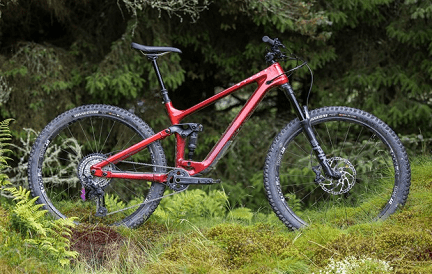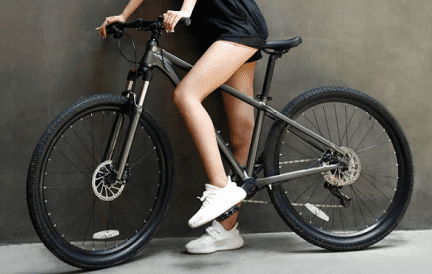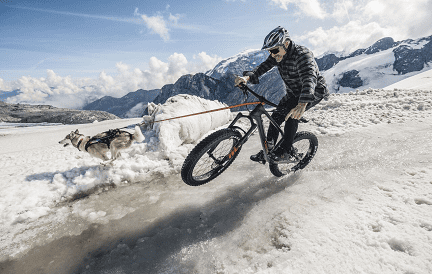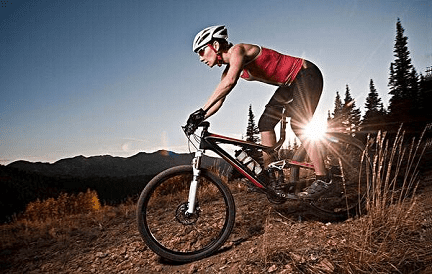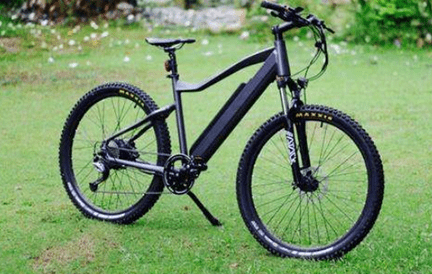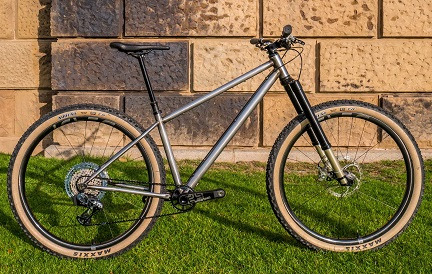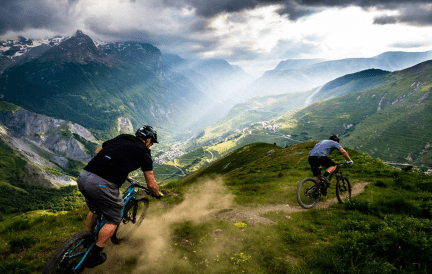Hardtails are better than ever because of modern geometry, technology, and components, and they’re also easy to maintain and cost-effective. In this article, we will talk about choosing an aggressive hardtail mountain bike from different aspects.
- What is an Aggressive Hardtail Bike
- Selecting an Aggressive Hardtail Mountain Bike
- Top 5 Most Aggressive Hardtail Mountain Bikes
- Frequently Asked Questions
- Summary
What is an Aggressive Hardtail Bike
Aggressive hardtail bikes are the most recent generation of hardtail bikes, outperforming earlier generations such as trail, cross, road, mountain, and gravity. Hardtails come in various styles, including trail, cross, road, mountain, gravity, and even fat bikes. The performance, geometry, and pedaling methods of each model are unique. It was created for individuals looking for a more challenging ride to put their ability, endurance, and competency to the test. Over time, these bikes have improved safety, performance, and efficiency. It’s utilized in both contests and pleasure riding. Although they are not as glamorous as full-suspension bikes, many riders prefer them because they are less costly.

Aggressive hardtail mountain bikes’ front suspension will aid riders in handling challenging off-road terrain. The front suspension will absorb part of the impact while traveling over lumps, bumps, and jumps, reducing the strain on the rider. Hardtails are distinguished by their ability to ride in a variety of conditions. They’re also a more cheap, sturdy, and adaptable alternative for riders who want to go off-road or try mountain biking for the first time.
Unlike other bikes, aggressive hardtails excel in every situation, even XC(cross country) races. However, because of their unique characteristics, such as being lightweight, XC bikes do not belong to the aggressive hardtail group. Aggressive hardtail bikes are capable of trail riding and full-on Enduro racing. Unlike XC bikes, which stagnate once they leave the XC zone, aggressive hardtails continue to display what a hardcore bike without rear suspension is capable of.
Selecting an Aggressive Hardtail Mountain Bike
Off-road riding requires robust components that can withstand the pressures of mountain biking. Consider the following components when selecting an aggressive hardtail mtb.
-
Frame material
There are two types of primary materials used in bike manufacturing: aluminum and carbon fiber. Aluminum is less expensive, heavier, and more resilient than carbon fiber. You can afford a few knocks and crashes without damaging the frame’s structural integrity. Aluminum has a significant advantage in dampening vibrations and absorbing impact due to its tolerance for harsh environments. On the other hand, carbon fiber is more expensive and lighter. Carbon is a solid material, yet it is brittle and thus cannot provide the exact tolerances as aluminum. As a result, crashes and rock impacts are more likely to break than damage the frame. On the other hand, carbon fiber’s strength compensates for its brittleness.
-
Front suspension
Hardtail only features front suspension, which is enabled by a fork component. The front suspension has a hydraulic system to allow the front tire to move up and down in response to unstable terrain. The length of the fork legs, also known as stanchions, varies in length. They are known as travel and are usually measured in millimeters.
For cross-country trails, you should aim for a distance between 100mm and 120mm. You may want to search for travel between 130mm and 150mm for all-mountain trail riding. However, a recent category of aggressive hardtails features fork travel of up to 180mm with longer, lower, and softer geometry for steep trails.
-
Brakes
When purchasing an aggressive hardtail mountain bike, one of the most critical components is the brakes. Not only do they bring you to a full stop, but they also aid with trail speed management. Usually, there are two types of brakes for an aggressive hardtail mountain bike. The first is the disc brake, which is the favorite for mountain bikers because they have a quick response time and a powerful braking system. Some disc brakes use hydraulic systems that are available in various configurations and at a range of pricing ranges. They are quite simple to maintain and enhance if you want additional braking power. The second is the rim brake; they are less expensive and simpler to maintain. On the other hand, Rim brakes are not recommended for rapid trail riding, and their functionality might be affected when wet.
-
Wheels
The most common wheel sizes are 27.5 inches and 29 inches. Historically, bigger 29 inches wheels were used for cross-country cycling. While the 27.5 inches wheel is lighter, it also can be more maneuverable for tricky riding. Choosing a wheel typically comes down to personal preference, so it is strongly advised to test it out before you buy.
-
Buying the bike
After examining the components, they are also a few things you need to consider. The first is to create a budget for yourself. Bikes may easily become costly when considering higher-end components and brands, so setting a spending limit is a good idea. You can purchase an aggressive hardtail mountain in person at a bike store, online, or from second-hand merchants and individuals. Never underestimate the second-hand market since you may find a really good deal.
The next thing is trying out the bike; it can provide insight into what is most appropriate for you. Certain brands have demo days in bike parks and trail centers, where you may receive guidance and test rides on the trails. Bike stores are another excellent opportunity to view and feel the bike in person. Some stores may even allow you to ride around the car lot.
Top 5 Most Aggressive Hardtail Mountain Bikes
Below are the top 5 aggressive hardtail mountain bikes.
-
Ibis DV9 NX
The Ibis DV9 is a lightweight bike that is perfectly comfortable on a trail ride as it is in a cross-country race. This bike features a rather good, conservative-designed geometry. This bike places great value on pedal efficiency and agility above downhill performance. This bike is an excellent alternative for riders looking for an adaptable hardtail who usually ride on smooth terrain. This bike offers very high performance for $2,459. The downside is that the DV9 is not recommended for riders who frequently ride on tough terrain. The lightweight carbon fiber frame transmits a lot of impact to the rider and thus can make the rider uncomfortable. This bike is best used by experienced riders who can ride downhill with the appropriate technique.
-
Rocky Mountain Growler 50
The Rocky Mountain Growler is a high-speed mountain bike that thrives on rough terrain. This aggressive hardtail features the same geometry found on most enduro racing bikes. This long bicycle is extremely stable at high speeds, and it also makes the rider confident on rough terrain. Climbing mild and light hills were comfortable, thanks to the tight seat tube angle that places you directly above the cranks. This bike is an excellent choice if you are the type of rider that likes getting wild and riding fast. The Rocky Mountain Growler 50 costs about $1,899.
However, this bike does have some downsides. Despite its amazing ability to climb moderate gradients, you might find technical climbing to be less optimal. It is because of the bike’s long wheelbase and super-slack frontend that it is hard to handle. Besides that, the brakes are a little underpowered compared to how fast this bike can go.
-
Specialized Fuse Expert 29
The Specialized Fuse is one of the best aggressive hardtail mountain bikes. It is an overall mountain bike because of its solid build. It is a competent climber, descends effectively on a wide variety of terrain, and is equipped with a pretty sturdy build. It has a well-balanced built geometry and 29 x 2.6 inches tires that ensure precise and swift riding. This bike is quite impressive in a variety of terrain. With about $2,150, you can get this high-value mountain bike.
On the other hand, this mountain bike is not perfect. You will need to service the fork after purchasing the bike. The reason for that is that the fork contained almost no oil, and the seals were nearly dry.
-
Commencal Meta HT AM Essential
The Commencal Meta HT AM has a versatile hardtail, 27.5 inches wheels and tires and can charge hard across difficult terrain. Its geometry is aggressive enough to maintain stability at high speeds and build confidence on rocky terrain. The 27.5 inches wheels also help the rider maintain balance on a wide range of terrain. Additionally, it is a comfortable and efficient climber. The downside of this bike is that it is not for a rider that is looking for fast riding. Their big tires can be a little boring on soft terrain. The Commencal Meta AT AM Essential costs about $1,999.
-
Marin Pine Mountain 2
The Marin Pine Mountain is an all-purpose steel aggressive hardtail. The frame features several mounting points, and the steel design ensures a smooth, wet ride. The pedaling position is secure, and this bike is an incredibly competent climber. It can descend well, turn nicely, and climb pretty fast. It is a bike that is suitable for backpacking or adventuring. Although it has multi-purpose, this bike is a little bland and dull, and it costs $2,499, which can be a little expensive.
Frequently Asked Questions
We have some frequently asked questions on an aggressive hardtail mountain bike.
-
Can You Ride on Trails with an Aggressive Hardtail Bike
You can ride hardtails on trails; they will be tougher to ride and will push you to improve on your basic mountain biking skills, like picking the correct line. Hardtails will not provide you the stability and the speed as a full suspension on tricky terrain and downhill. Many mountain bikers usually begin with a hardtail to establish a strong skill foundation.
-
Are Aggressive Hardtails Better for Climbing
Because hardtail mountain bikes are lighter than full-suspension mountain bikes, they are excellent for climbing. Climbing and sprinting are the two circumstances affected by your bike weight. The rapid power transmission to the back wheel offers a big benefit, making your climbing much more enjoyable.
-
Are They Good for Riding on the Road
The answer is yes, but the tires will slow you down. It means You’ll get more intense strength training as a result. Besides that, the tires will eventually wear out. However, you have the versatility of riding on mixed terrain, which is more enjoyable. Hardtails are a very good and budget-friendly bike that lets you enjoy many terrains and are suitable for outdoor enjoyers.
-
Are They Good for Long-distance Rides
Hardtails are ideal for long-distance riding because of their comfort (a more upright position), durability, and endurance. They also offer multiple bag storage and the ability to ride effectively on any terrain (not limited to the road). However, they are not as efficient as road bikes for riding long distances on the road since they are slower and take longer to travel that distance. Another disadvantage is that, unlike on a road bike, you cannot modify the handgrip, which might result in sore hands.
-
Is Aggressive Hardtail Good for Cross Country
Yes, because an aggressive hardtail is lighter and more agile than full-suspension mountain bikes on long climbs and smooth off-road terrain. The lighter the bike, the more suitable it is for cross country riding.
-
Can You Ride an Aggressive Hardtail at a Bike Park
You can absolutely ride it at bike parks; however, you must ensure that you have the necessary skill level to ride such tracks, and if you intend to go downhill, you must ensure that your brakes provide the stopping force required on steep descents.
Summary
The aggressive hardtail mountain bike is undoubtedly very versatile. It can ride on various terrain, is fast for climbing and is very comfortable. It is also good for long-distance rides because of its durability and endurance. There are some options you need to consider before buying one, such as frame material, brakes, front suspension and wheels. Finally, after considering the materials, you can try it to see if it’s a suitable bike for you.

